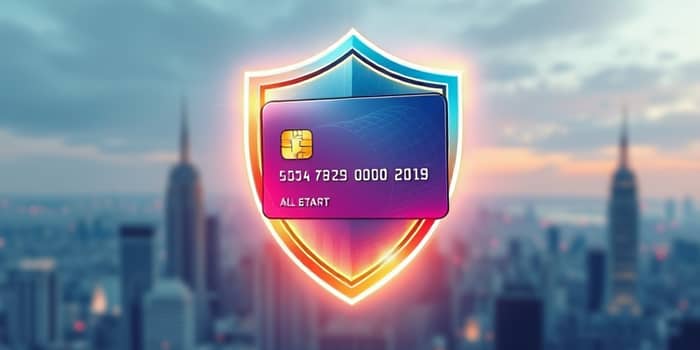
Discovering your credit card is lost or stolen can trigger immediate anxiety. Yet, knowing exactly what steps to take can transform panic into purposeful action. In this article, we guide you through an urgent response plan to mitigate financial damage and outline the resources available for recovery. Backed by recent statistics and expert recommendations, this comprehensive action plan will help you navigate the immediate aftermath, understand your rights under federal law, and establish strong habits to avoid future incidents. Stay informed, stay protected, and regain control over your financial well-being.
When you realize your credit card is missing, take immediate action to protect your finances. Every minute counts in preventing unauthorized charges and limiting your liability. Follow these essential steps without delay to secure your account and start the recovery process.
Most issuers deliver replacement cards within five business days, though expedited shipping is often available for a fee. If you rely on your card for daily expenses, ask for overnight delivery or request temporary virtual cards in the interim.
Your prompt report not only halts further charges but also ensures you benefit from robust consumer protections. Under federal law, federal law caps your liability at $50 when a card is lost or stolen, and often the actual cost is zero if you report before unauthorized transactions occur.
Major card issuers uphold “zero-liability” policies that shield you from fraudulent charges. However, policies vary by provider and require timely notification. Delaying your report can increase your exposure, so always alert your issuer the moment you detect a problem.
Keep in mind that pre-authorization holds—temporary pending amounts placed by merchants—may still appear even after your card is frozen. These holds typically drop off within a few days, but understanding how they work helps avoid confusion when monitoring account balances.
Consider placing a credit freeze with the three major bureaus to prevent new accounts from being opened fraudulently in your name. Although this step can be temporarily inconvenient, it fortifies your defenses against identity theft and gives you peace of mind.
Credit card fraud shows no signs of slowing down. In 2025, the United States accounts for nearly half of all global credit card losses, with unauthorized purchases totaling $6.2 billion and more than 62 million Americans experiencing fraudulent charges. These trends underscore the importance of vigilance and swift action.
Attempts at fraud have surged by 46% year-over-year, and e-commerce-related schemes are up 140% over the past three years. Fraudulent charges rose dramatically year over year, emphasizing that no one is immune to evolving threats. Millennials remain particularly vulnerable, with 44% losing money to fraud versus 24% of seniors.
The U.S. alone accounted for 46% of global credit card fraud in 2025, reflecting the high volume of digital transactions and e-commerce activity. Fraud sources range from skimming devices at ATMs to sophisticated phishing campaigns targeting personal data. Awareness of common attack vectors can guide you in recognizing and avoiding these threats in daily life.
Beyond physical theft, compromised data is the primary source of fraud, accounting for over 90% of cases. Experts predict that by mid-decade, global losses will exceed $43 billion, so staying ahead of the curve is crucial.
Prevention starts long before your card goes missing. Cultivating secure habits reduces your risk and gives you greater confidence when conducting transactions. Follow these best practices to reinforce your financial safeguards.
For online purchases, consider using virtual card numbers or one-time-use card tokens offered by some issuers. These dynamically generated numbers can limit exposure, since they expire after a single transaction. When shopping on public Wi-Fi, use a virtual private network (VPN) to encrypt your connection and safeguard sensitive data.
Implementing these routines might take effort at first, but they quickly become second nature and drastically reduce your exposure to fraudsters.
Once your new card arrives, update automatic payments to avoid service interruptions. Contact every merchant where your old card was on file—subscriptions, utilities, or loan payments—to ensure continuity of service.
Enrolling in credit monitoring or identity protection services can offer an extra layer of security. Many financial institutions provide free alerts on suspicious activity, and third-party services can help you recover from identity theft if needed.
Finally, maintain an organized record of all correspondence and documentation. Should any disputes arise, having a clear paper trail of your reporting timeline and actions taken will expedite resolution.
Your journey from discovery to restoration illustrates the power of preparedness and prompt action. By arming yourself with knowledge and leveraging consumer protections, you turn a stressful event into a manageable process. Keep these strategies at hand, and face the future with confidence.
References













